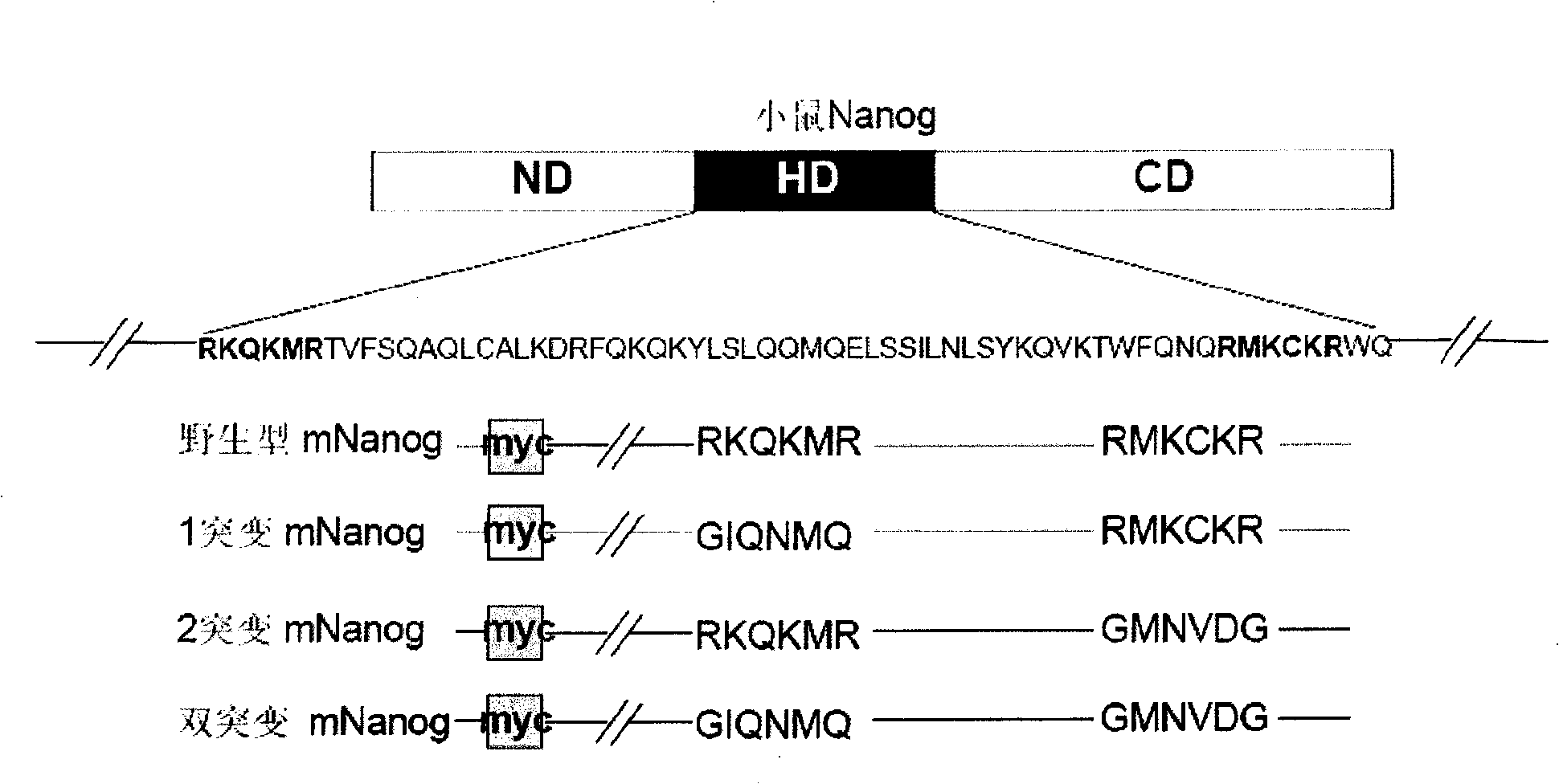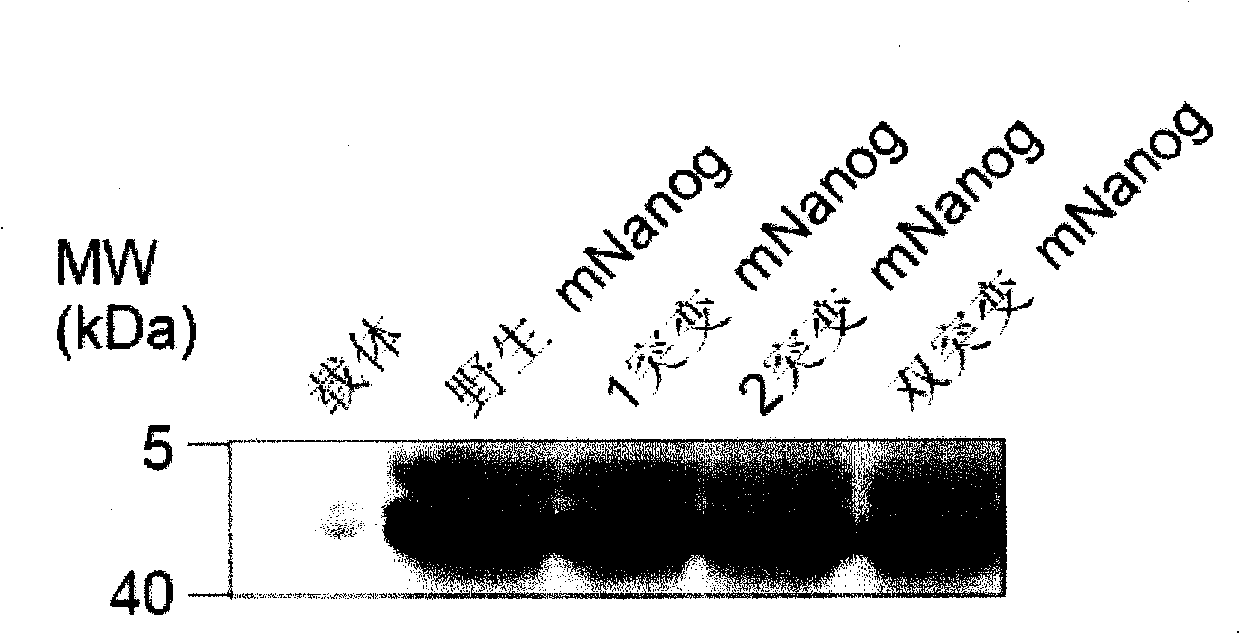Nanog inhibitory type mutant and uses in Nanog function research
A mutant and functional technology, applied to Nanog inhibitory mutants and its application in Nanog function research, can solve the problem that no one has reported the nuclear entry mechanism.
- Summary
- Abstract
- Description
- Claims
- Application Information
AI Technical Summary
Problems solved by technology
Method used
Image
Examples
Embodiment 1
[0035] Example 1: Culture of pluripotent cell lines
[0036] Mouse pluripotent cell lines (P19 and F9 cells) were cultured on 0.1% gelatin-coated substrates in a medium supplemented with 15% fetal bovine serum FBS (GIBCO) in a 37°C incubator (see Pan, G et al. (2005) J Biol Chem 280(2), 1401-1407).
Embodiment 2
[0037] Embodiment 2: Construction of Nanog vector (SEQ ID NO: 1)
[0038] 2ug of total RNA was reverse transcribed using a reaction system with a final volume of 20ul (see Pan, G et al., (2006) Faseb J 20(10), 1730-1732) to obtain a cDNA library. The mouse Nanog fragment was amplified using the primers in Table 1, and then recovered by agarose gel electrophoresis.
[0039] Table 1: Primers for cloning Nanog fragments:
[0040] SEQ ID NO
[0041] The eukaryotic expression plasmid was constructed by inserting PCR fragments into the multiple cloning site EcoRV of the pCR3.1 vector, that is, the pCR3.1 vector (hereinafter referred to as the vector) was digested by EcoRV at 37 ° C for 4 hours, and then the cDNA from the pluripotent cells The amplified mouse Nanog fragment was ligated in the presence of ligase at 16°C for 4 hours to obtain the eukaryotic expression vector of wild-type mouse Nanog.
Embodiment 3
[0042] Example 3: Construction of mouse Nanog eukaryotic expression vector with nuclear localization signal sequence mutation
[0043] After predicting the amino acid sequence (SEQ ID NO: 5) of the whole mouse Nanog by PSORT II software, we found that there is a nuclear localization signal (Nuclear Localization Signal, NLS) at the amino terminus and carboxyl terminus of its conserved Homeobox domain, namely Nuclear localization signal 1 (NLS1, RKQKMR, SEQ ID NO: 6) and nuclear localization signal 2 (NLS2, RMKCKR, SEQ ID NO: 7). We use molecular biology means (point mutation PCR technology) to perform site-directed mutagenesis using the specific mutation primers in Table 2, and mutate nuclear localization signal 1 and nuclear localization signal 2 into irrelevant sequences-GIQNMQ and GMNVDG, such as figure 1 As shown, the target mutants were obtained, namely 1 mutant mNanog (SEQ ID NO: 8), 2 mutant mNanog (SEQ ID NO: 9) and double mutant mNanog (SEQ ID NO: 10).
[0044] Table ...
PUM
 Login to View More
Login to View More Abstract
Description
Claims
Application Information
 Login to View More
Login to View More - R&D
- Intellectual Property
- Life Sciences
- Materials
- Tech Scout
- Unparalleled Data Quality
- Higher Quality Content
- 60% Fewer Hallucinations
Browse by: Latest US Patents, China's latest patents, Technical Efficacy Thesaurus, Application Domain, Technology Topic, Popular Technical Reports.
© 2025 PatSnap. All rights reserved.Legal|Privacy policy|Modern Slavery Act Transparency Statement|Sitemap|About US| Contact US: help@patsnap.com



